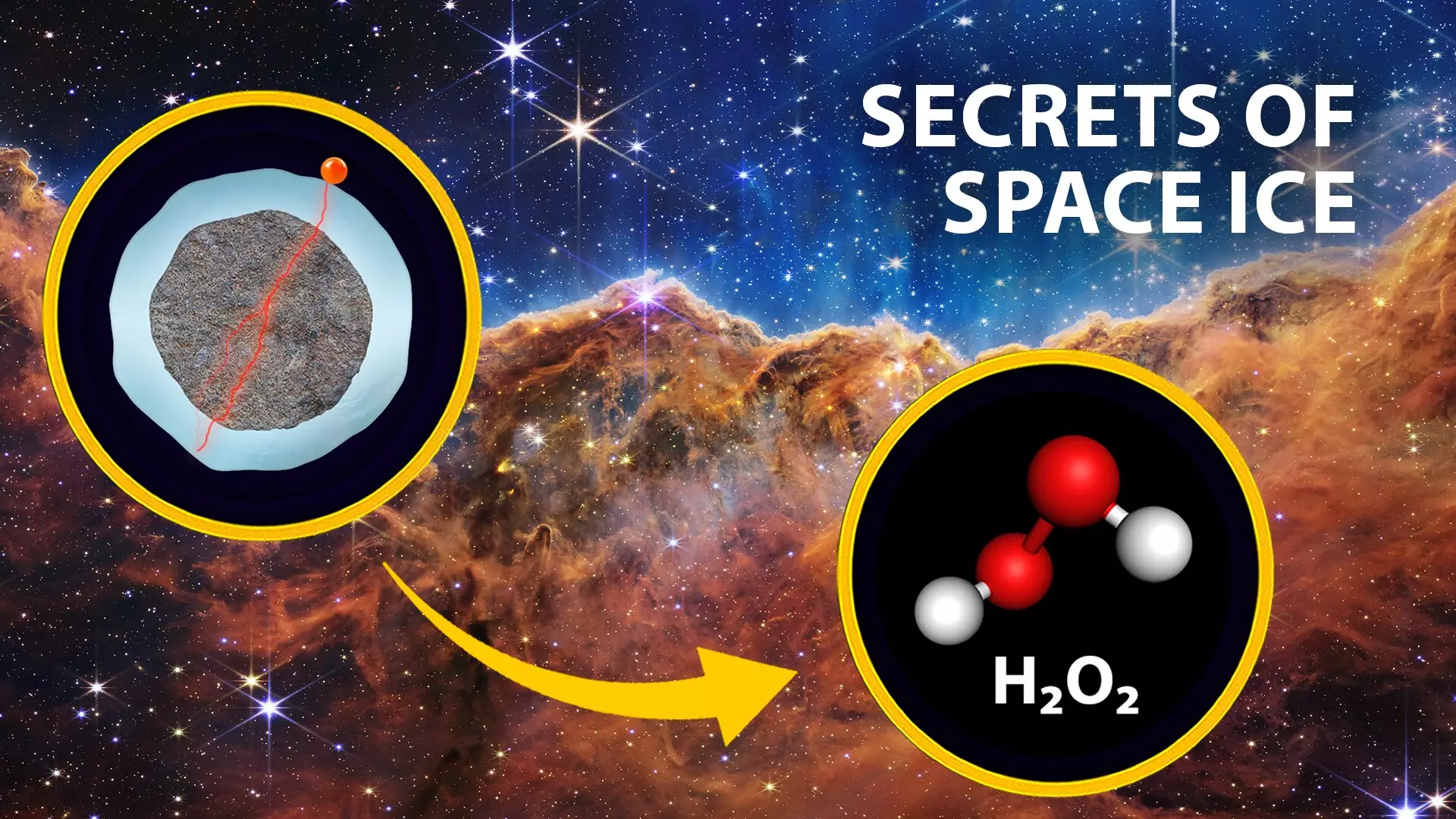The age-old question of our existence—who we are and why we are here—can be traced back to the cosmic elements from which we are formed. As the evocative lyrics of Crosby, Stills, Nash & Young encapsulate, we are indeed “stardust,” composed of the remnants of interstellar gas and dust. Contemporary scientific endeavors seek to decode how these celestial materials give rise to life, primarily through examining the chemical processes that lead to the formation of prebiotic molecules. Recent studies involving the influence of low-energy electrons generated by cosmic radiation serve as a fascinating window into both the origins of life beyond Earth and potential advancements in medical and environmental science.
At the forefront of this investigation is a team of researchers, including undergraduate student Kennedy Barnes, who presented groundbreaking findings at the recent American Chemical Society’s (ACS) fall meeting. This conference, which attracted approximately 10,000 presentations, provided a platform for discussing a wide array of scientific topics, among which chemistry’s intersection with astrobiology plays a pivotal role. Essential to this inquiry is understanding how chemical reactions that potentially foster life can occur in the extreme conditions of space.
Barnes, alongside her colleague Rong Wu and under the mentorship of esteemed professors, engaged in a detailed analysis aimed at shedding light on the comparative roles of low-energy electrons and photons in the synthesis of extraterrestrial prebiotic molecules. Past studies hinted at a catalytic capacity for both low-energy electrons and photons; however, Barnes’ research suggests a pivotal distinction. Their calculations indicate that cosmic-ray-generated electrons may outnumber photons significantly in cosmic ice, signaling that electrons could be the more influential catalyst in producing essential prebiotic molecules.
While the implications for space exploration are profound, the study also draws connections to Earth, particularly in understanding the behavior of low-energy electrons and their role in molecular transformations during radiolysis—the process of breaking down molecules through radiation. Barnes and her colleagues uncovered that interactions between low-energy electrons and water lead to the generation of harmful byproducts like hydrogen peroxide, which poses a threat to stratospheric ozone and could even impact cellular processes.
This duality of research highlights its applicability not only in space but also in terrestrial contexts such as medical applications and environmental remediation. For instance, the medical community can leverage insights from radiation chemistry to enhance cancer treatment protocols. The idea that humans, as primarily water-based entities, are deeply intertwined with this research underscores the universality of these cosmic chemistry studies.
The environmental angle also provides a pathway for remediation strategies. The production of low-energy electrons in high-energy radiation treatments can effectively dismantle hazardous substances in wastewater, reflecting a potential for synthesizing clean processes while combating pollution.
Moreover, the researchers have adopted innovative experimental methodologies to simulate extraterrestrial conditions. Using an ultra-high-vacuum chamber and advanced technology, they’ve been able to recreate the icy conditions found in space to observe the chemical outputs from both low-energy electrons and photons. This hands-on experimental approach not only validates their theoretical models but also deepens insights into the very foundations of prebiotic chemistry.
The investigation extends to larger cosmic bodies, particularly focusing on notable celestial entities like Europa, Jupiter’s ice-covered moon, which serves as an ideal candidate for further study. With an abundance of ice, the potential for discovering complex organic chemistry that mirrors early Earth conditions underscores the importance of these findings.
Barnes’ ambition is not limited to the immediate implications of her research. She aims to inspire future investigations into the role of low-energy electrons within astrochemical modeling frameworks. By varying the molecular composition within their experimental ice films, her team is exploring additional avenues for prebiotic chemistry, in collaboration with European researchers. This international approach fosters a rich dialogue among scientists eager to unravel the mysteries of life’s origins.
As the scientists stand on the brink of revolutionary discoveries, the excitement surrounding their work is palpable. This new frontier of astrobiology indicates that we are only beginning to scratch the surface of understanding the cosmos’ role in shaping life. The outcomes of such studies hold implications that could redefine our comprehension of both the universe and our place within it.
Ultimately, as we draw connections between the cosmos and the terrestrial environment, the potential results of this research may not only answer questions about life’s origins in the universe but also enhance life on Earth. The confluence of these scientific inquiries illuminates a path forward that connects cosmic phenomena with critical challenges we face on our home planet.


Leave a Reply